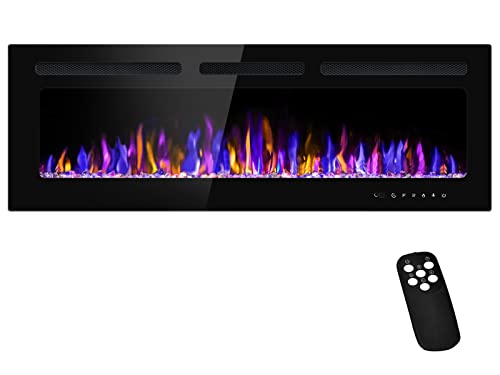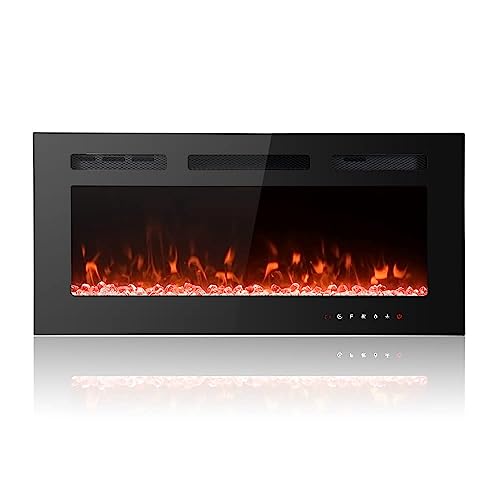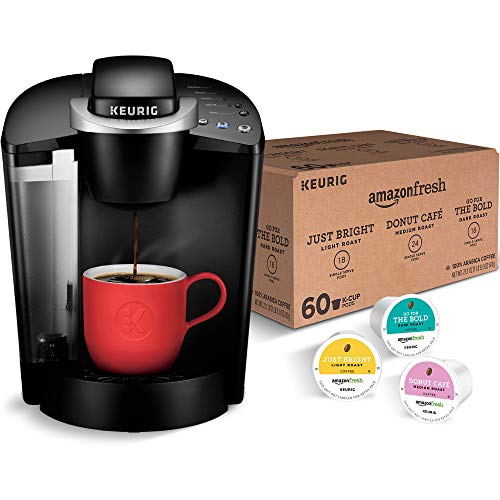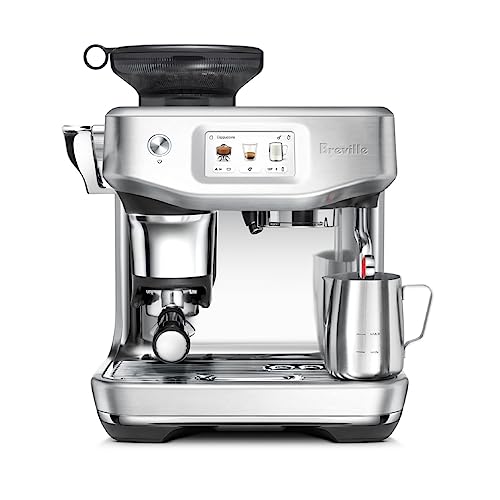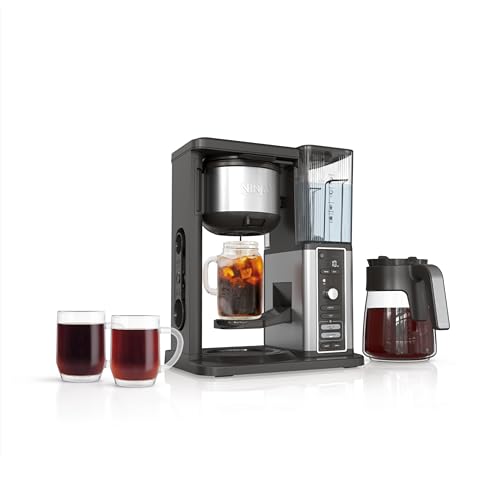- What is the Unit of Measure “Cup”?
- How Much Coffee Grounds per Cup?
- Best Ways to Use Coffee Grounds
- FAQs for “How Much Coffee Grounds per Cup?”
- How Long Do Coffee Grounds Stay Fresh?
- How Can I Tell If Coffee Grounds Have Gone Wrong?
- How Should I Dispose of Coffee Grounds?
- Where Can I Get Coffee Grounds?
- What’s in Coffee Grounds?
- Are Cockroaches Attracted to Coffee Grounds?
- What’s the Difference Between Coffee and Coffee Grounds?
- Do Ants Like Coffee Grounds?
- What’re Old Unused Coffee Grounds Good for?
- Are There Any Dangers to Using Coffee Grounds?
- Can Coffee Grounds Be Used as Mulch?
- Conclusion
How Much Coffee Grounds per Cup?
Hi everyone, this post will not be, as usual. Today, we will not learn about coffee-related questions like “is A strong?” or “How to make A?”,… Today, we will learn about the “waste” of coffee generated after we make coffee, which is coffee grounds.
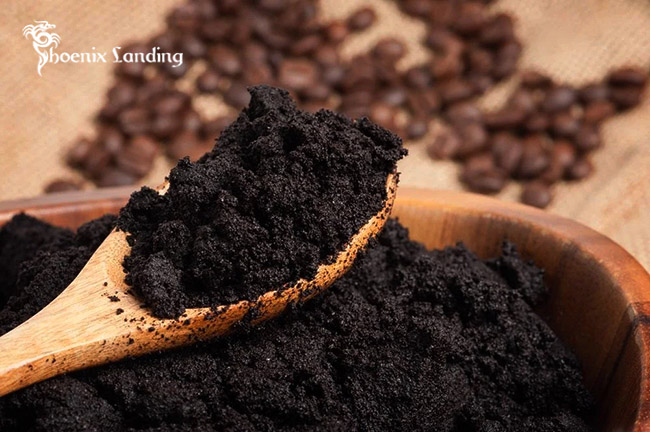
Today’s central question is: “how much coffee grounds per cup?“. When I received these questions, I wasn’t sure I would answer them because, as you know, two words are similar: ground coffee and coffee grounds. They are changing the order. You might be wrong because people often ask about the amount of ground coffee to adjust the ratio when making coffee for the best taste. But knowing that coffee grounds have so many uses, and people also need to know how much per cup or tablespoon to efficiently work with them, I decided to write this article to answer this question.
In this article, we will find the answer to “how much coffee grounds per cup?“. Along with that, learn about the metric quantities, how to convert them, and the benefits of coffee grounds. So, please don’t throw the coffee grounds in the trash. Keep them doing the exciting things that will be mentioned in this article!
What is the Unit of Measure “Cup”?
Before going into the main question, let’s find out what a Cup is and how 1 Cup changes to other units.
A cup is a volume measurement unit equal to 8 fluid ounces (237 milliliters). It is often used in recipes, especially for cooking and baking. The term “cup” is also sometimes used to refer to other units, such as the metric cup (250 mL) or the British imperial cup (284 mL). In some contexts, “cup” may be used informally to refer to a large quantity of something. For instance, one might say they need “a cup of sugar,” meaning they need a certain amount of it rather than referring to an actual measuring vessel.
The cups commonly found in U.S. kitchens are typically made from plastic or metal and have standard measurements printed. Still, specialty cups are made for specific tasks, such as measuring out small amounts of ingredients. Measuring cups are also available in sets that include various sizes. It is important to note that volume measurements for dry ingredients can often differ from those of wet ingredients due to settling and other factors. It is best to use a set of measuring cups specifically designed for the task to get the most accurate measurement.
The metric system’s standard unit of measuring volume is the liter (L). One liter is equivalent to 1,000 milliliters (mL) or 4.22 cups. Other metric units used to measure volume include deciliters (dL), centiliters (cL), and milliliters (mL). For instance, one cup equals 237 milliliters, while half a cup equals 118.5 milliliters.
The standard unit for measuring volume in the imperial measurement system is the gallon (gal). One gallon is equal to 4 quarts (qt) or 16 cups. Other imperial units used for measuring volume include pints (pt), fluid ounces (fl oz), and teaspoons (tsp). For instance, one cup equals eight fluid ounces, while half a cup equals four.
When measuring ingredients in recipes, it’s essential to use the correct unit of measure so that your recipe turns out as intended. It’s best to find out what measurements are used in the recipe and use measuring cups or spoons accordingly. With these helpful tips, you can measure ingredients accurately and confidently for your delicious creations.
How Much Coffee Grounds per Cup?
Coffee grounds are essentially ground coffee or (coffee powder); if we dry them, those two things will be similar. So to answer this question, we need to answer how much ground coffee is per cup. But the question is more than one because some of you will want to put it in grams, liters, or other units of measure such as teaspoons, tablespoons, etc. We will need two things, that’s precise. It is the conversion table and density (D: kg/m³).
What is the Density of the Coffee Grounds?
Density is the tool that helps us convert mass to volume. Coming to the density of the coffee grounds (calculated when dried), we will have two numbers, one when they are filled randomly and the other when we compress them as hard as possible.
The density of coffee grounds (or ground coffee) is 308 kg/m³ (fill density) to 399 kg/m³ (final bulk density).
Unit Conversion Table (Coffee Grounds)
| Tablespoon | Cup | Gram | Milliliter |
| 1 | 1/12 | 7 | 22.72 |
How Do I Figure That Out?
First, I will convert D (Density) from kg/m3 to g/cm3 for easy calculation. 1 kg/m3 = 0.001 g/cm3, so 308kg/m3 = 0.308 g/cm3 (g/ml).
As you know, D will be calculated by dividing the mass by the volume (m/V). Thus, the volume will equal the mass divided by Density (V = m/D). Otherwise, a tablespoon of coffee will have a mass of 7g, which has a volume of 7/0.308 = 22.73 ml (actually 22.72727272…).
Also, as learned in the first section, 1 cup has a volume of 237 ml. So we need 237/22.73 = 10,428, which we can round to 10.5 tablespoons of coffee grounds to fill a cup.
The answer to this question is to fill 1 cup (237 ml). We need 10.5 tablespoons of coffee, equivalent to 73g. Of course, this is only an approximate number because the amount of air between the coffee grounds is not always the same. The coffee grounds may not be dried, so the amount of water will also affect the results.
Best Ways to Use Coffee Grounds
So you know how much coffee grounds per cup. Now let’s learn the best ways to use coffee grounds. Coffee grounds have a variety of uses beyond the kitchen. Here are some of the best ways to make use of them:
Fertilize Your Garden
Coffee grounds make a great addition to your garden soil. The nitrogen and other minerals found in coffee grounds benefit plants’ growth. Coffee grounds also help to improve soil structure, reduce compaction and increase water retention. To use them in your garden, spread a thin layer of used or fresh coffee grounds around the base of your plants. You can also mix them into potting soil or compost—ensure you don’t add too much, as it will affect the soil’s acidity.
Additionally, if you want to be extra careful, try soaking used coffee grounds overnight before adding them to your garden (this will help reduce potential caffeine toxicity). Using coffee grounds to fertilize your garden is an easy and effective way to give your plants the nutrients they need to thrive. Plus, it’s a great way to repurpose used coffee grounds rather than throwing them away!
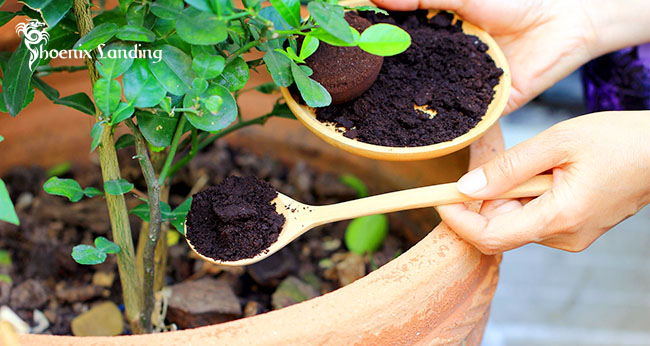
It’s also important to remember that coffee grounds may attract animals and pests like slugs and snails. If you’re concerned about this, consider covering the grounds with something like straw or mulch. This will help deter animals while providing beneficial nutrients to your garden soil.
Additionally, fresh coffee grounds can be acidic, so you should avoid using them directly on acid-loving plants like blueberries or rhododendrons—instead, use composted coffee grounds if possible. By following these tips, you can ensure that your garden gets all the nutrients from coffee grounds and that you’re keeping pests away.
Exfoliate and Rejuvenate Skin
Coffee grounds are an excellent ingredient for natural skin exfoliation. Coffee grounds possess many beneficial acids and oils to help remove dead skin cells and promote rejuvenation. For example, the chlorogenic acid found in coffee grounds is an antioxidant that helps protect the skin from environmental damage. Additionally, caffeine helps to boost circulation, giving skin a brighter and fresher look.
To create a refreshing exfoliating scrub you’ll need:
- 2 tablespoons of coarse-ground coffee
- 1 tablespoon of coarse sugar or sea salt
- 1 teaspoon honey
- 4 tablespoons of olive oil (or any other carrier oil)
Mix all ingredients until it forms an even paste. Gently massage the scrub onto your face and body using circular motions. Rinse off with warm water after 1-2 minutes and pat dry. Use 1-2 times a week to get the best results.
Coffee grounds can also be used as part of an overnight face mask. Mix 2 tablespoons of coffee grounds with one teaspoon of honey, apply all over your face, and leave it on overnight. Wash it off in the morning for glowing skin!
Using coffee grounds is easy to make your natural skincare routine at home. With their exfoliating properties, caffeine content, and antioxidant benefits, coffee grounds are an excellent choice for naturally rejuvenating and refreshing your skin.
Freshen Up Your Home
Coffee grounds can be used to make your home smell fresh and inviting. They are particularly significant for areas that tend to gather a lot of foul odors, like closets, basements, and garages. To use coffee grounds as a natural air freshener, place them in small containers or sachets around the room. In addition to neutralizing unpleasant smells, the subtle aroma of coffee can add an extra layer of pleasantness to any space.
If you want to enjoy coffee’s benefits while avoiding artificial air fresheners, try brewing a pot with essential oils mixed in. It will provide an all-natural scent, and you’ll also get the bonus of aromatherapy. You can combine different essential oils to create a unique scent that you like, or just pick one that you find particularly pleasing.
Another way to take advantage of coffee grounds is through potpourri. Several recipes are online for making homemade potpourri with dried coffee beans and other fragrant ingredients such as lavender, citrus peels, and spices. The combination will make an excellent present for friends and family who appreciate natural scents.
Finally, if you want your home to smell like freshly brewed coffee all the time, try simmering some on the stovetop! To do this, place two cups of water in a pot along with 1/4 cup of used coffee grounds and two tablespoons of sugar. Allow it to simmer for about 20 minutes, and enjoy the delightful aroma that fills your home.
As you can see, there are many ways to use coffee grounds to freshen up your home! Whether you’re looking for a natural air freshener or want to create a pleasant-smelling potpourri, coffee grounds offer an affordable and accessible solution. So why give them a try today? You may be surprised at how much better your home smells with the bonus of aromatherapy!
Clean Your Dishes
Knowing the answer to “how much coffee grounds per cup?” will make it easier to measure how many coffee grounds you want to use. Coffee grounds are a great way to make delicious coffee and can also be used as an eco-friendly cleaning agent. To use ground coffee to clean your dishes, combine one part baking soda with two parts ground coffee and mix them until they form a paste.
Next, wet the surfaces you want to clean with water and spread the mixture over them. Scrub gently with a soft sponge or cloth in a circular motion until the dirt is gone. Rinse off your dishes with warm water afterward and dry them off before storing them away.
Ground coffee can also be used for tough stains on pots and pans or stuck-on food from ovens or barbecues. To remove these tough stains, use a damp cloth with the coffee-baking soda mixture and rub it in a circular motion. The thick paste will act as an abrasive to break down the surface dirt, making it easier to clean up.
Ground coffee is also great for cleaning glassware or porcelain dishes. Sprinkle some of the grounds on the soiled areas and scrub gently with a soft sponge or cloth until the dirt has been removed. Rinse off your dishes afterward, and you’re done!
The best part about using ground coffee to clean dishes is that no harsh chemicals are involved – just natural ingredients that are good for the environment. Plus, coffee grounds have antimicrobial properties that help keep your dishes clean and fresh. So, the next time you’re looking for a green cleaning option, give ground coffee a try!
Deodorize Your Refrigerator
Coffee grounds can be used to naturally help deodorize your refrigerator. Place a bowl of coffee grounds in the back of your fridge and let it sit for several days or until the smell is gone. The coffee grounds will absorb the odors from your fridge, leaving it smelling fresh! You can also add a few drops of essential oils to the coffee grounds for an added boost of fragrance. Make sure to replace the coffee grounds every few weeks to keep your refrigerator odor-free. Using this natural method, you won’t have to worry about chemicals affecting the food stored in your fridge.
To take it one step further, you can make a DIY deodorizer out of coffee grounds and baking soda. Mix equal parts of both ingredients in an open container or bowl, and place them inside your refrigerator. This mixture will help to absorb odors while keeping your refrigerator smelling fresh. Replace the mixture every few weeks for optimal results.
Using coffee grounds to naturally deodorize your fridge, you’ll have a much more pleasant-smelling kitchen in no time! Not only will this method keep food from spoiling due to bad smells, but it’s also much healthier than relying on chemical deodorizers that could be potentially hazardous to your health. Give it a try today and enjoy the benefits of naturally deodorizing your home.
Polish Metal Surfaces
Using coffee grounds to polish metal surfaces is easy and effective. It would help if you had dry, used coffee grounds, a cloth, and water. Start by wetting the metal surface with water. Then sprinkle some of the coffee grounds over the wet surface and start rubbing it in gentle circular motions with the damp cloth. Do this for several minutes, rinse the excess grounds with cold water, and then enjoy your results!
Coffee grounds work great on stainless steel appliances like refrigerators or stoves and brass fixtures such as door handles or doorknobs. It helps remove oxidation from metals, making them look new again. Coffee grounds protect against corrosion since their slightly acidic properties help prevent rust.
Coffee grounds are a great alternative to other traditional polishing products as they are natural, non-toxic, and have no added chemicals. Plus, it’s easy to reuse your used coffee grounds instead of throwing them away! So the next time you need to shine up some metal surfaces around your home, reach for the coffee can and try it! You’ll be glad you did. There are still many interesting things in the article “How Much Coffee Grounds per Cup?”. Continue reading!
Improve Your Hair
Coffee grounds can be used for various purposes, including boosting the health of your hair. Coffee has a range of active compounds that can help nourish, strengthen, and protect your locks. You can use coffee in different ways to get beautiful results.
If you want to use coffee as part of your regular haircare routine, you can make an infusion by boiling two tablespoons of ground coffee with 1 cup of water. Once the mixture is cooled, apply it to your scalp and leave it on for 10 minutes before rinsing thoroughly. This will help stimulate blood flow, making hair follicles more robust and healthier while promoting new growth.
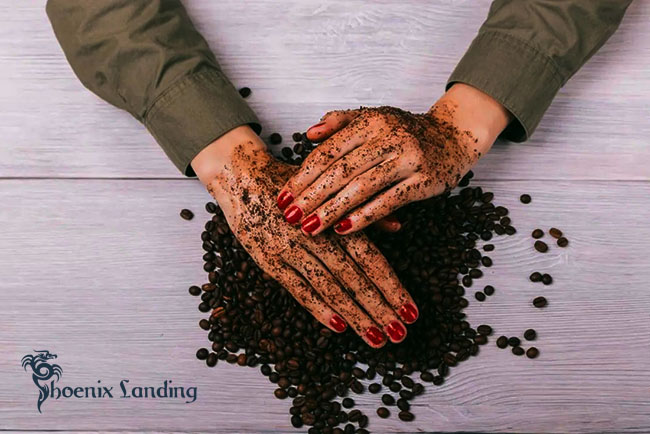
You can mix half a cup of cooled coffee grounds with one egg yolk or a few tablespoons of plain yogurt to create a nourishing hair mask. Leave it on for 15 minutes before washing your hair with shampoo and conditioner. This will help moisturize and add shine while protecting your scalp from damage.
If you don’t want to use coffee as part of your hair care routine, consider applying cooled coffee grounds directly to areas of dryness or irritation. Due to its anti-inflammatory properties, coffee helps reduce redness, itching, and irritation. Or try making a scrub by mixing 1/4 cup of ground coffee with two tablespoons of coconut oil for a refreshing treatment that will leave your locks feeling soft and shiny!
Absorb Oil Stains
Coffee grounds are more than just a great pick-me-up in the morning; they can also help absorb oil stains from fabric or carpet. To use coffee grounds for this purpose, pour them onto the affected area and let them sit for 15 minutes before vacuuming the excess. The coffee grounds will draw the oil away from the fabric, making it easier to remove. You may need to repeat this process several times until the stain is gone.
For particularly stubborn stains, you may want to try mixing equal parts of dish soap and white vinegar with the coffee grounds before applying. This combination should be able to break down even tough oil stains. After cleaning up any remaining residue, launder or dry clean the fabric as usual. You can also use this method for cleaning oil from concrete or other hard surfaces; add a bit of water to the coffee grounds and scrub the area with a scouring pad or brush. The coffee grounds will absorb whatever oil remains on the surface, leaving it stain-free.
Using coffee grounds to remove oil stains is an easy, effective way to keep your fabrics and other surfaces clean without harsh chemicals. You get to upcycle unused coffee grounds that would otherwise go to waste! So next time you have an oil spill in your home, try reaching for some used coffee grounds instead of store-bought cleaners. It’s better for your wallet and the environment.
Using coffee grounds can help you save money and reduce waste while also getting creative with your daily routine! Try out some of these tips to incorporate coffee grounds into your life today!
FAQs for “How Much Coffee Grounds per Cup?”
How Long Do Coffee Grounds Stay Fresh?
Coffee grounds remain fresh for up to two weeks if stored in an airtight container in a cool, dark place like your pantry or cabinet. That said, the fresher the grounds, the better-tasting your coffee will be. If you can, try to use them within one week of purchase for optimal flavor and avoid leaving them on your countertop for extended periods.
Additionally, if you choose to freeze your coffee grounds, they may stay fresh for up to 6 months. However, this is not recommended as it can cause flavor changes and decrease their potency over time. If properly stored, however, freshly ground coffee beans will stay potent and flavorful for up to two weeks after opening.
How Can I Tell If Coffee Grounds Have Gone Wrong?
The most obvious way to tell if coffee grounds have gone wrong is by the smell. Fresh coffee grounds should smell strong and freshly roasted, while grounds that have gone bad may have a sour or musty aroma. Additionally, old coffee grounds will usually be darker in color than fresh ones, as much of their original flavor has been lost over time.
If you notice any visible signs of mold on the grounds or see them clumping together, it’s best to discard them immediately, as they are no longer safe to use. Lastly, taste testing your coffee grounds can also help you determine if they’ve gone bad; stale grounds will yield an unpleasantly bitter taste compared to the rich flavor of freshly-roasted beans. If you’re ever in doubt, it’s better to discard old grounds and purchase freshly-roasted ones for optimal flavor.
How Should I Dispose of Coffee Grounds?
Coffee grounds can be composted in a backyard compost bin. To dispose of coffee grounds, first, ensure that the grounds are calm before handling them. Then add the coffee grounds to your compost pile and mix it with other organic materials like leaves or yard clippings. Coffee grounds should never be disposed of in a septic tank since too much acidity from coffee can kill beneficial bacteria needed for the healthy breakdown of waste material in the system. You can also use used coffee grounds as fertilizer by sprinkling them directly onto your garden soil.
They will add essential nutrients such as nitrogen and potassium to your plants. Coffee grounds may also deter pests or weeds if sprinkled around gardens, flower beds, or planters. Lastly, they can also make a natural exfoliant for skin care. To make a body scrub, mix one part coffee grounds with two parts coconut oil and use it to buff away dead skin cells. If you don’t have other uses for the coffee grounds, check local resources for composting programs that accept food waste.
Where Can I Get Coffee Grounds?
Coffee grounds are widely available from a variety of sources. You can buy them online, in grocery stores, in specialty coffee shops, or grind your beans at home. Many specialty coffee shops will have these available if you’re looking for organic and sustainably-sourced options. If you ask nicely, you can also get free coffee grounds from local cafes or restaurants!
Be sure to check your city’s rules and regulations regarding the disposal of food materials before taking action. Finally, if you decide to grind your own beans at home there are plenty of excellent quality burr grinders out there that will give you an even and consistent grind every time. No matter which option you choose, be sure to enjoy your freshly brewed cup of coffee!
What’s in Coffee Grounds?
When asked about “how much coffee grounds per cup?”, we often have other problems arising from it, such as “what’s in coffee grounds?” Coffee grounds are made up of a variety of different components. They contain various proteins, carbohydrates, minerals, and oils. In addition, they also contain more than 800 identified compounds and substances that give coffee its flavor and aroma. These include caffeine and other alkaloids; organic acids; polysaccharides (sugars); lipids or fats; phenolic chemicals called chlorogenic acids; volatile aromatic compounds such as esters, alcohols, and terpenes; nitrogenous compounds such as trigonelline and proteins.
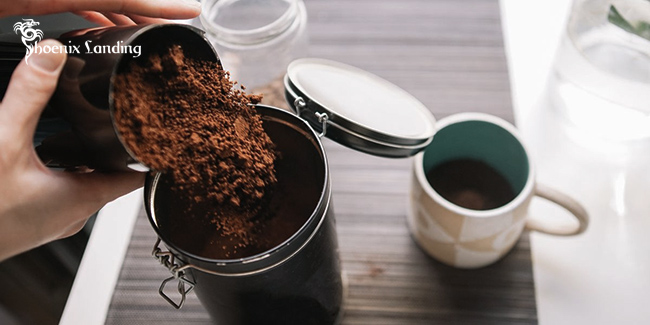
Coffee also contains trace elements like magnesium, calcium, potassium, iron, zinc, manganese, copper, and chromium. All these components are responsible for the unique taste of coffee. Furthermore, coffee grounds contain several beneficial minerals, including magnesium, potassium, and iron. These minerals can help digestion, reduce inflammation and provide other health benefits.
In addition to the compounds mentioned above, coffee grounds also contain a variety of other substances such as cellulose pulp, lignin (the material that gives wood its strength), sugar molecules called oligosaccharides, tannins, and in some cases, small amounts of pesticides or herbicides. All these components make up the composition of coffee grounds, giving them distinct flavor and aroma. So next time you’re enjoying your morning cup of joe, take a moment to appreciate the complexity of what’s inside those grounds!
Are Cockroaches Attracted to Coffee Grounds?
Cockroaches may be attracted to coffee grounds, especially if other food sources are nearby. Coffee grounds can provide a source of sugar and protein for the cockroach and a warm place to hide. Additionally, the smell of coffee grounds may also attract cockroaches. When this is the case, it is best to discard the used coffee grounds in an airtight container or bag and take it outside immediately. This will help prevent other attraction or infestation by cockroaches in your home.
Additionally, ensure that all food debris is wiped away from countertops and floors quickly, as this can also be an attractive scent for cockroaches. Vacuuming regularly and keeping food sealed tightly in containers can also help deter cockroaches, as they are scavengers. If an infestation is suspected, it’s best to contact a professional pest control expert to ensure the problem is eliminated correctly.
What’s the Difference Between Coffee and Coffee Grounds?
The primary difference between coffee and coffee grounds is the form in which they are presented. Coffee beans are the roasted seeds of the Coffea plant, which have been ground into a fine powder to create what we know as “coffee grounds.” The size of the particles varies depending on how finely or coarsely it has been ground. Coffee grounds can be used for brewing beverages such as espresso, French press, cold brew, pour-over, and more. On the other hand, coffee refers to an infusion made with water passing hot (not boiling) water through coffee grounds.
This is typically done using various methods, such as drip brewing and percolation but is also popularly associated with espresso machines. Coffee offers a unique flavor profile with various flavor notes depending on the type of beans and brewing method used. Coffee grounds can be used to make cold brew coffee by soaking them in water for several hours, overnight, or up to 24 hours in some cases. The beverage is “cold brewed coffee” rather than “coffee.” Also, coffee grounds can create unique dishes such as risotto, ice cream, and cake.
Do Ants Like Coffee Grounds?
Yes, ants do like coffee grounds. Coffee grounds can be an effective way to manage populations in your yard or garden. The acidic nature of the coffee deters some ant species, and the tiny particles can provide a tasty snack for others. Ants are attracted to the smell of coffee and will quickly make their way to any freshly ground beans.
However, it is important to make sure that you don’t give them access to too much caffeine, as this can have negative effects on their health. Coffee grounds should also be spread across different areas to prevent ants from clustering together in one spot. If the coffee is not deterring the ants, consider trying other natural repellents, such as cayenne pepper or citrus peels.
What’re Old Unused Coffee Grounds Good for?
Old unused coffee grounds can be used for a variety of different purposes. Coffee grounds are an excellent nitrogen source, making them great for use as a natural fertilizer in many gardens and lawns. They also make great compost, helping to provide valuable nutrients to soil while improving drainage. Additionally, they can act as a natural pest repellent when sprinkled around plants or in the garden.
Coffee grounds can even be used to help clean sinks, stoves, and other surfaces due to their oil-absorbing properties – mix with some water and some baking soda for an effective cleaning solution! Finally, coffee grounds are great for beauty routines such as exfoliating skin or using them as part of DIY hair dyes or facial masks. With so many uses, old coffee grounds can be repurposed in various ways.
Are There Any Dangers to Using Coffee Grounds?
Yes, some potential dangers should be considered when using coffee grounds. For example, unrinsed coffee grounds can contain mold spores which can cause respiratory problems and other health issues if inhaled. Coffee grounds can also attract pests such as cockroaches, so it is essential to ensure they are kept in a secure container or disposed of quickly.
Additionally, caffeine is toxic to cats and dogs so it’s essential to keep them away from areas where coffee grounds have been used. Finally, since coffee grounds are acidic, they should not be used on acid-sensitive plants like azaleas or rhododendrons – use an alternative fertilizer for these plants.
Can Coffee Grounds Be Used as Mulch?
Yes, coffee grounds can be used as mulch in the garden. Coffee grounds are especially good for use around acid-loving plants such as azaleas and rhododendrons since they contain naturally occurring compounds like nitrogen which can help to enrich the soil. Additionally, coffee grounds can act as a natural pest repellent when spread around other plants by deterring slugs and snails. It is also important to note that coffee grounds should not be compacted or piled up since this could lead to anaerobic conditions, which can damage roots.
Conclusion
Thus, you have finished reading our “How Much Coffee Grounds per Cup” article. In short, the answer in this article is: we can fill a cup with about 10.5 tablespoons of dried coffee grounds, equivalent to about 73g, provided they are not compressed. As you know, this is just an absolute number, so the exact results may sometimes differ from these numbers.
Besides, in this article, we also outline ways to use coffee grounds, from gardening to taking care of your body, clothes, home, and household items. Coffee has excellent effects, and so are its grounds. All in all, coffee is a beautiful thing. If we make the most of it, our lives will be better. So, take your time to dump the coffee grounds in the trash after use. Turn them into something of value for you.
We hope this article will be useful to you, if you have any questions or find any mistakes, don’t hesitate to comment below, it will help us a lot. Thanks for reading my writing. Visit Phoenix Landing Bar to read many good and valuable articles.
